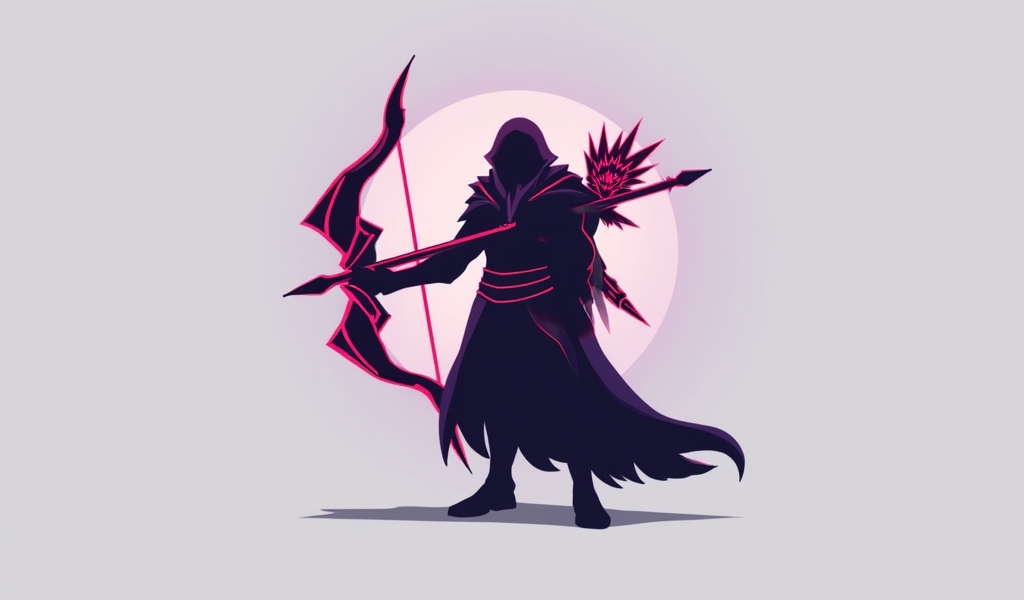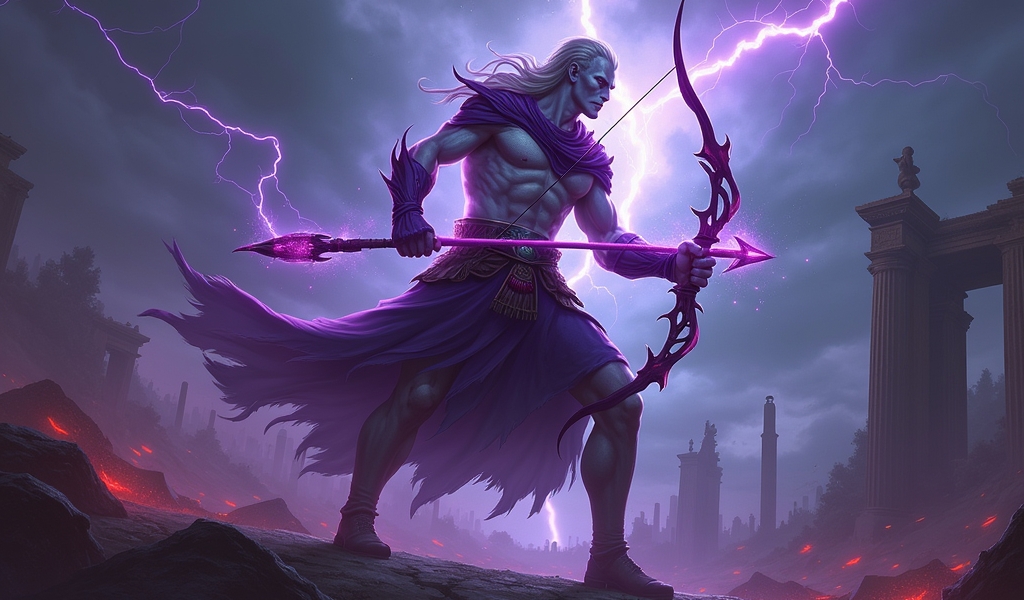Overview
How to play Varus effectively requires mastering his versatile kit that allows for three distinct playstyles: lethality poke, traditional crit, or on-hit builds depending on team compositions and match situations. Success with this immobile yet powerful ADC hinges on precise positioning, strategic ability usage, and synergizing with supports while adapting your itemization to counter enemy threats.
Table of Contents
Introduction to Playing Varus
Learning how to play Varus effectively can transform you into a formidable force in the bottom lane. As one of League of Legends’ most versatile ADCs, Varus combines long-range poke, crowd control, and devastating team fight potential. Whether you’re just picking him up or looking to refine your skills, mastering Varus can significantly improve your climb up the ranked ladder.
In this comprehensive guide, we’ll dive into the essential strategies and techniques that will help you dominate with Varus. From understanding his unique kit to optimizing your builds and positioning, these tips will equip you with the knowledge needed to excel in any match-up.
Varus stands out in the current meta due to his flexibility and ability to adapt to different team compositions. Furthermore, with proper coaching and practice, you can leverage his strengths to punish opponents and carry games consistently. Let’s explore how to play Varus like a pro and turn his arrows into your ticket to victory.
Understanding Varus’s Kit and Playstyle
Before diving into advanced strategies, it’s crucial to understand what makes Varus unique among ADCs. His kit offers incredible versatility, allowing him to be built in multiple ways depending on team needs and enemy composition.
Varus’s passive, Living Vengeance, grants him attack speed when he scores a takedown on champions, large monsters, or epic monsters. This passive is particularly powerful during teamfights, allowing you to ramp up your damage output as enemies fall.
His Q ability, Piercing Arrow, is his signature skill – a long-range skillshot that deals more damage the longer you charge it. This ability forms the core of poke-oriented builds and can chunk enemies from impressive distances before engagements.
Hail of Arrows (W) provides both passive on-hit magic damage and an active that spreads Blight stacks, which can be detonated by other abilities. Mastering this interaction is key to maximizing Varus’s damage potential in extended trades.
Chain of Corruption, his ultimate, launches a tendril of corruption that immobilizes the first enemy champion hit and spreads to nearby enemies. This powerful crowd control tool can be used offensively to initiate fights or defensively to peel for yourself.
When approaching Varus, you need to decide between three main playstyles: AD crit (traditional marksman), on-hit, or lethality (poke). Each style has distinct strengths and weaknesses, making Varus adaptable to various team compositions and situations. Riot’s official champion page provides detailed ability descriptions that can help you understand these mechanics in depth.

Mastering the Laning Phase with Varus
The laning phase often determines how effectively you can carry as Varus. Unlike some ADCs who need to scale, Varus can exert pressure from level 1, making him a formidable lane opponent.
First and foremost, focus on consistent CS (creep score). As with any ADC, your primary income source is minions, and Varus’s relatively long auto-attack range of 575 units helps secure last hits safely. Aim for 8-10 CS per minute as your benchmark for success.
Use your Q strategically during the laning phase. While it’s tempting to spam this ability for poke, doing so will quickly drain your mana. Instead, look for opportunities when your opponent is locked in animation (like last-hitting) to land a charged Q for maximum effect.
Here’s how to optimize your laning phase with Varus:
- Stack your W passive on minions before trading with enemies to maximize damage output
- Position aggressively when your support has strong engage potential
- Use E to slow pursuing enemies or to secure kills when enemies are fleeing
- Save your ultimate for key moments – either to set up ganks or to escape dangerous situations
- Track the enemy jungler’s position to avoid overextending when they might be nearby
Wave management is particularly important for Varus. Due to his lack of mobility, you’re vulnerable to ganks if pushed too far forward. Learning to work with experienced coaches can significantly improve your understanding of wave control and laning fundamentals.
When playing against engage supports like Leona or Nautilus, maintain a safe distance and use your superior range to poke without putting yourself at risk. Against enchanters like Lulu or Nami, you can play more aggressively and look for extended trades where your Blight stacks can provide significant damage.
Positioning and Teamfight Tactics
Positioning is arguably the most critical skill for any ADC, but it’s especially vital for Varus due to his immobility. One misstep can lead to instant death, so mastering your positioning will significantly improve your effectiveness.
During teamfights, your primary goal is to output consistent damage while staying alive. This means positioning at the maximum effective range of your auto attacks and abilities. Remember that your damage contribution over time is zero if you’re dead, so prioritize survival over hero plays.
Follow these positioning principles when playing Varus:
- Stay behind your frontline at all times, using them as a buffer between you and enemy threats
- Track key enemy cooldowns, especially gap closers and crowd control abilities
- Use terrain and fog of war to your advantage when setting up ultimate or Q shots
- Position near walls that you can use to create distance with Flash if necessary
- Constantly assess threats and position accordingly – be dynamic, not static
When playing the poke (lethality) build, your positioning should be even more conservative. Your goal is to land charged Qs from a safe distance before engagements, softening targets before committing to full teamfights. With this build, you can effectively siege objectives and control neutral areas by forcing enemies to respect your damage output.
For traditional crit builds, your positioning should maximize your auto-attack uptime while maintaining safety. This means staying at the edge of your attack range and kiting effectively. Consider investing time in practicing attack-move techniques to improve your kiting efficiency.
Your ultimate is a powerful tool for self-peel or follow-up crowd control. When faced with divers or assassins, don’t hesitate to use it defensively. The value of staying alive often outweighs the offensive potential of holding it for the “perfect moment.”
Optimal Item Builds for Different Situations
Varus’s versatility extends to his itemization, with three viable build paths that each emphasize different strengths. Choosing the right build based on team compositions and game state is crucial for maximizing your impact.
The Lethality (Poke) Build focuses on maximizing your Q damage for long-range harassment. This build shines against squishy compositions and when your team needs siege potential. Your core items include:
- Duskblade of Draktharr or Eclipse
- Manamune (evolving into Muramana)
- Serylda’s Grudge
- Edge of Night
The Traditional Crit Build transforms Varus into a late-game hypercarry with consistent auto-attack damage. This build works well with protective supports and against tanky compositions. Your core items include:
- Kraken Slayer or Immortal Shieldbow
- Phantom Dancer or Runaan’s Hurricane
- Infinity Edge
- Lord Dominik’s Regards (against high-health targets)
The On-Hit Build balances ability and auto-attack damage while providing strong tank-busting potential. This versatile build works in most situations and provides a good mix of burst and sustained damage. Your core items include:
- Kraken Slayer
- Blade of the Ruined King
- Guinsoo’s Rageblade
- Wit’s End
Regardless of your main build path, consider defensive items based on the enemy composition. If facing heavy AP threats, Maw of Malmortius or Mercurial Scimitar can be lifesavers. Against AD assassins, Guardian Angel or Death’s Dance can provide crucial survivability.
Boot choice is also situational. Berserker’s Greaves are standard for maximum damage output, but Plated Steelcaps against heavy AD threats or Mercury’s Treads against CC-heavy teams can be worth the attack speed trade-off.
Consider working with professional LoL coaches to refine your build paths and understand when to adapt your itemization based on game state and enemy threats.

Support Synergies and Duo Strategies
Varus’s effectiveness is significantly influenced by his support pairing. Understanding which supports complement his playstyle can give you a substantial advantage in the laning phase and beyond.
Enchanter supports like Nami, Lulu, and Soraka enhance Varus’s trading potential with their shields, heals, and buffs. These pairings excel at sustained laning and scaling into late-game teamfights. Nami deserves special mention as her E ability can add slow and extra damage to your auto attacks, making landing your abilities significantly easier.
Engage supports such as Leona, Nautilus, and Thresh create opportunities for Varus to follow up with his chain of corruption. These aggressive duos can dominate the laning phase if played correctly. When paired with these supports, be ready to follow up immediately when they engage, layering your CC for maximum lockdown duration.
Poke supports like Xerath, Vel’Koz, and Brand synergize exceptionally well with lethality Varus builds. The combined poke pressure can force enemies out of lane or set up easy kills when they’re at low health. Coordinate your poke patterns with your support to maximize effectiveness.
Communication is key regardless of which support you’re paired with. Discuss your preferred playstyle and build path in champion select so your support can adjust accordingly. Setting up proper vision control with your support is also crucial for Varus’s safety, as his lack of mobility makes him vulnerable to ganks.
During the mid and late game, stick with your support during rotations and objective setups. Their peeling abilities remain vital for your survival, especially against dive compositions. Learning to play in sync with your support can dramatically increase your effectiveness as Varus.
Some particularly strong Varus support synergies include:
- Varus + Nami: The slow from Nami’s E guarantees landing your Q and R
- Varus + Thresh: Thresh’s hook into flay perfectly sets up your ultimate and burst combo
- Varus + Lulu: Polymorph plus Whimsy provides unmatched protection against assassins
- Varus + Zyra: The combined zone control makes securing objectives and teamfights easier
If you’re duo queuing, consider professional coaching services that can help both you and your support develop synergistic playstyles that maximize Varus’s potential.
Conclusion
Mastering how to play Varus effectively requires understanding his versatile kit, adapting your build to match game conditions, and maintaining disciplined positioning. With his ability to flex between poke, on-hit, and crit playstyles, Varus remains a relevant and powerful choice in the ever-changing landscape of League of Legends.
The five essential tips we’ve covered – understanding his kit, mastering the laning phase, perfecting your positioning, optimizing item builds, and synergizing with supports – provide a solid foundation for ADC domination with Varus. Remember that consistent practice and adaptation are key to climbing with any champion.
As you continue to refine your Varus gameplay, focus on the fundamentals while gradually incorporating more advanced techniques. Review your games to identify positioning errors or missed opportunities, and continuously adapt your playstyle to match the evolving meta.
Whether you’re piercing enemies from afar with charged arrows or melting frontlines with on-hit builds, Varus offers a rewarding experience for players willing to invest time in mastering his unique playstyle. Now take these strategies into your next game and show the Rift the true power of the Arrow of Retribution!
Frequently Asked Questions
Is Varus good for beginners in League of Legends?
Varus can be challenging for complete beginners due to his reliance on skillshots and lack of mobility. However, his straightforward laning pattern and versatile build paths make him a good pick for players with basic ADC fundamentals who want to expand their champion pool.
What is the best Varus build in the current meta?
The lethality (poke) build focusing on Q damage is currently performing well in higher elos, especially in coordinated play. That said, traditional crit and on-hit builds remain viable options depending on your team composition and the enemy lineup.
How do I land Varus’s ultimate consistently?
Try to use Chain of Corruption after enemies have used their mobility spells or when they’re in narrow corridors where dodging is difficult. Alternatively, layer it with your support’s CC or use it at close range when an enemy diver jumps on you.
Which supports work best with Varus?
Enchanters like Nami and Lulu work excellently with all Varus builds, providing both protection and offensive buffs. For lethality builds, poke supports like Xerath complement your playstyle, while engage supports like Leona pair well with on-hit or crit builds.
How do I deal with assassins as Varus?
Position defensively, save your ultimate for self-peel, and consider defensive items like Immortal Shieldbow or Guardian Angel. Stay near your support and don’t hesitate to use Flash defensively, as your survival is crucial for your team’s success in fights.




